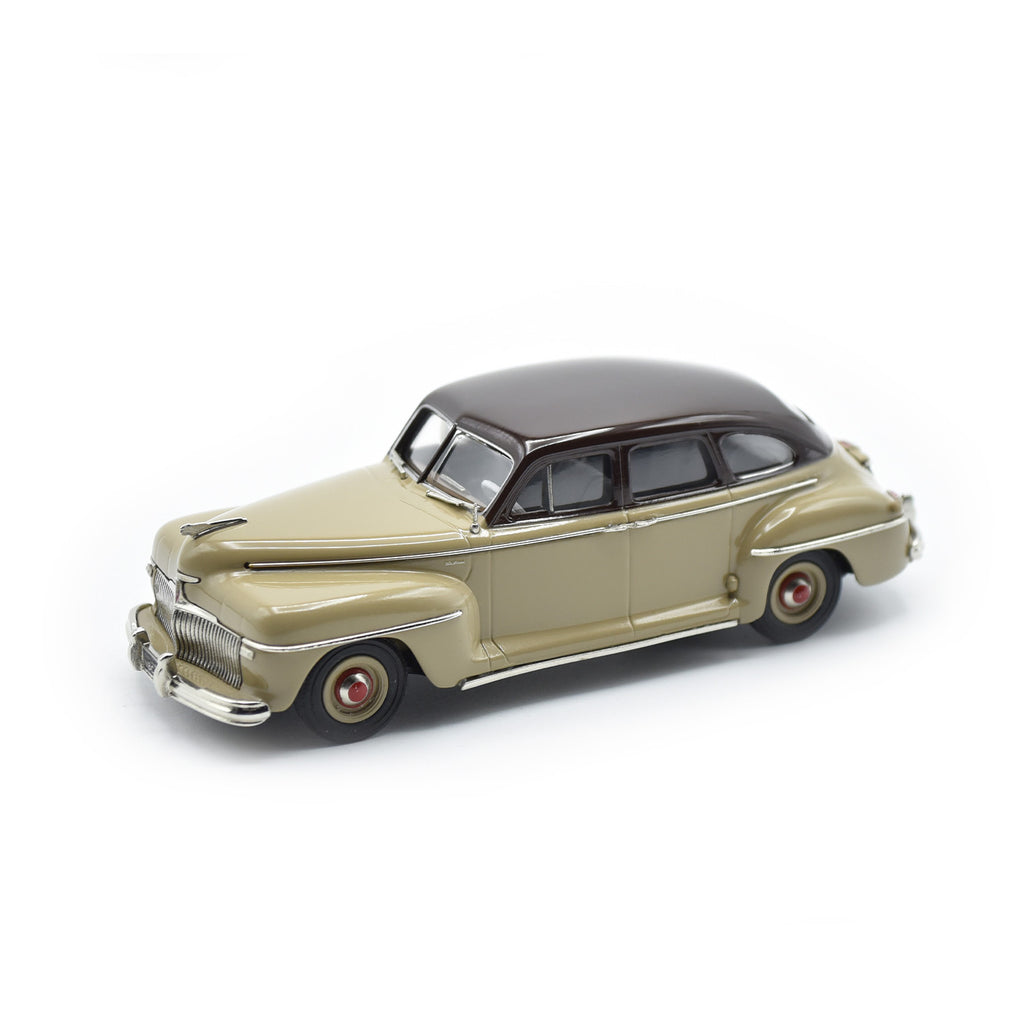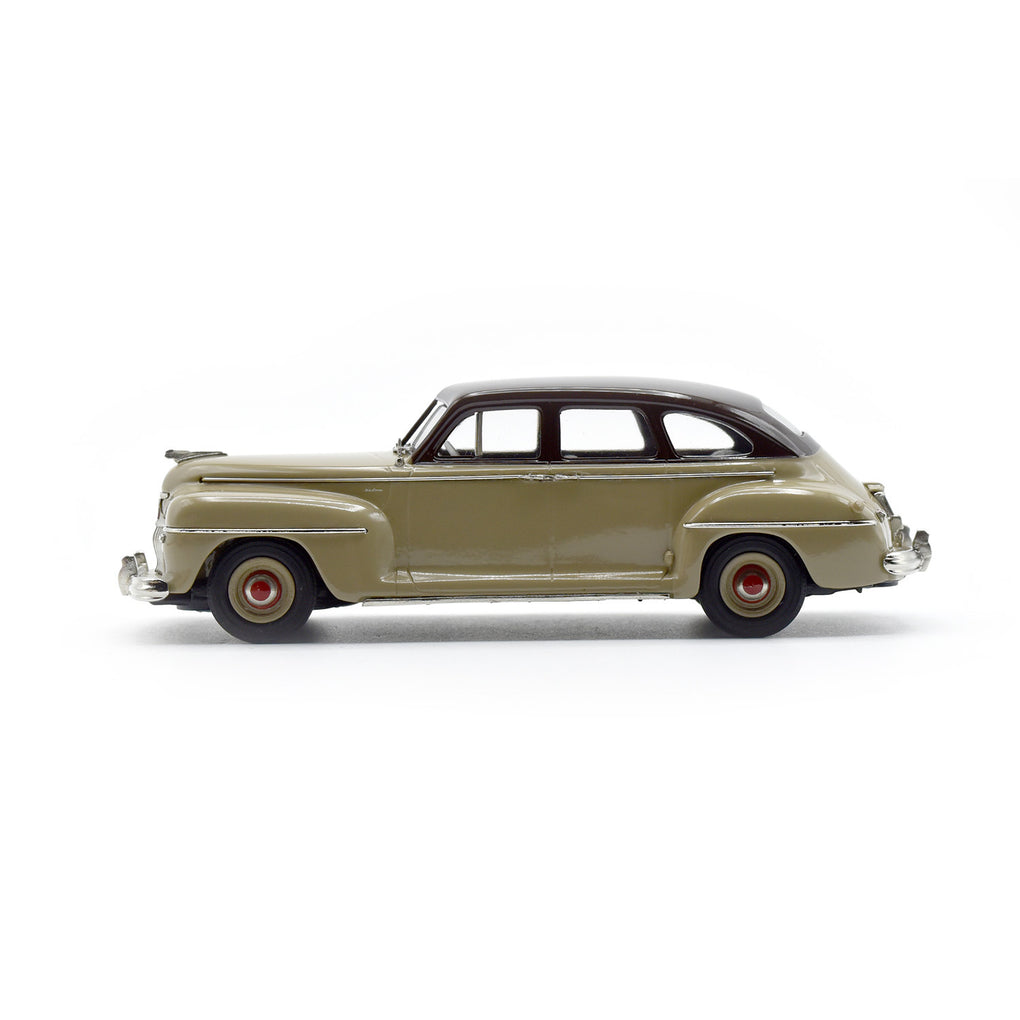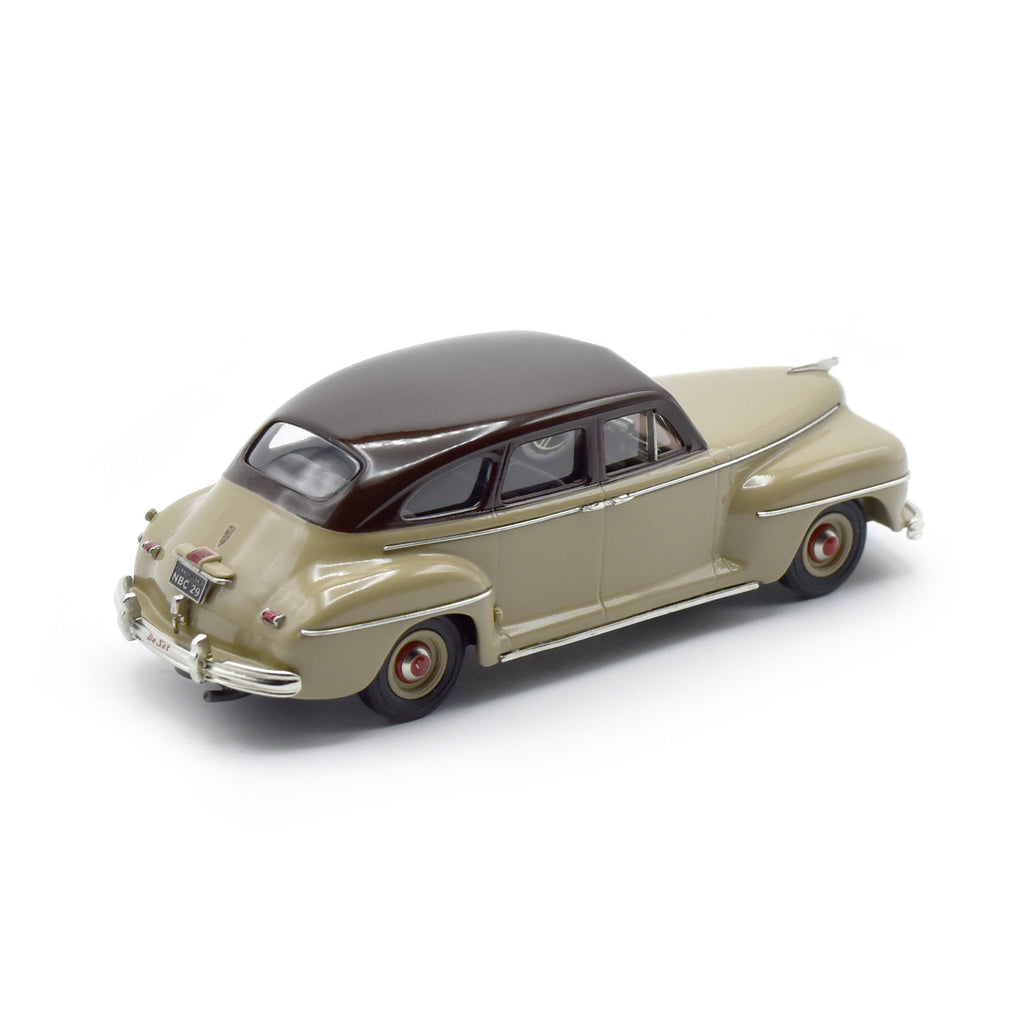1942 Desoto Deluxe 4-Door Sedan - The NB Center Collection
SKU: NBC29
AVAILABILITY: In stock
BODY TYPE: Sedan
MAKER: DeSoto
COLOR: Navajo Brown over Palomino Beige
MEASURE: 127mm or 5 inch
SCALE: 1:43
YEAR: 1942
DECADE: 40
The history of DeSoto began in 1926, when Walter P. Chrysler, motivated to expand his Chrysler Corporation into a full-line auto company, made a bid to buy the Dodge Brothers organization. This would not only give him a lower-medium priced car with a very good reputation, but it would also increase production, given the Dodge foundry and manufacturing capabilities. Another benefit would be the Dodge large dealer organization that had earned a very good reputation. The Dodge bankers that were handling the deal didn’t feel good about giving a timely answer to Chrysler’s offers, so the Corporation executives decided to introduce the DeSoto brand, a new low-medium priced car placed between the cheap Plymouth and the medium-priced Chrysler 65. The new DeSoto was conceived as an upscale Plymouth, with more luxurious interior furnishings and fitted with a more powerful 55 horsepower six-cylinder engine in place of a 45 horsepower four-cylinder. The very attractive body lines inspired by the big Chrysler 75 models and the competitive pricing generated very good sales in the first year of production. Ironically, just four days before the DeSoto was introduced, Chrysler’s offer to purchase the Dodge Brothers operation was accepted, so DeSoto and Dodge were rivals on the marketplace, even if they were part of the Chrysler Corporation. Success of the new DeSoto brand was phenomenal, with over 64,000 cars produced in 1929. Sales figures continued to remain very good during the next few years, thanks to great styling, high performance and good value for the money. When the DeSoto Airflow was introduced in 1934, sales took a beating. The new car was extremely advanced, had very good performance and road handling, and the styling was revolutionary, but the buying public was not ready for it. While Chrysler had another more conventional line of cars, DeSoto was stuck with it, and sales plummeted. The following year, a more traditional car was introduced, the Streamliner, and sales picked up again, remaining very good for the rest of the decade. 1941 was DeSoto’s best year, with almost 96,000 cars sold in the model year. Sales success was in part due to the outbreak of war in Europe, prompting many customers to buy cars in 1941, fearing that there might be no more new cars should the Nation be involved in the hostilities. But the 1941 DeSotos were without a doubt the best ever produced, with beautiful styling, powerful engines and a new innovation called “Fluid Drive”, a new semi-automatic transmission that eased the chores of driving.
1942 cars were heavily face-lifted from the previous year with wider rear fenders, new bumpers, concealed running boards, lower hood, and a toothy new grille, complementing the real novelty of the year, the “Airfoil” concealed headlamps. The headlights were hidden by little doors that opened when the headlight switch was turned on, a gimmick inspired by the luxurious 1936 Cord. The new 1942 models appeared in the showrooms in September 1941, Pearl Harbour was attacked in December, and by February all civilian car production was halted, and all manufacturing plants were converted to war production, after some 27,000 cars had been assembled.
This 1/43 model is an exact replica of the car at the NB Center, Allentown, USA.












